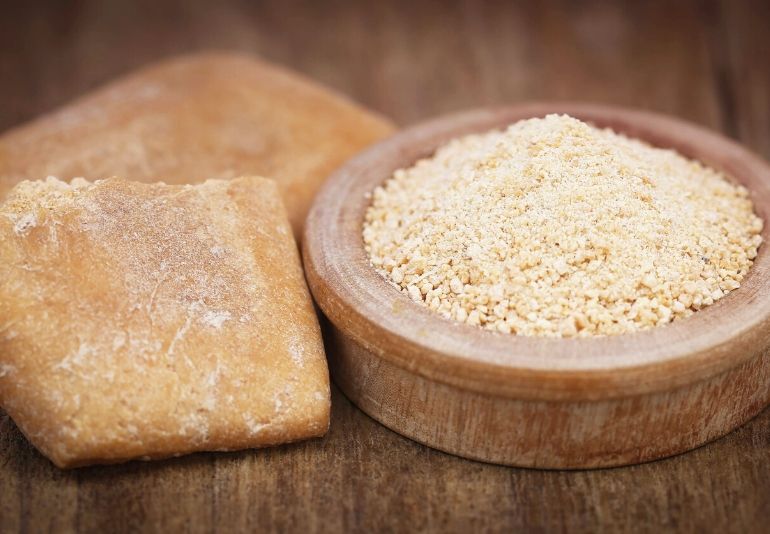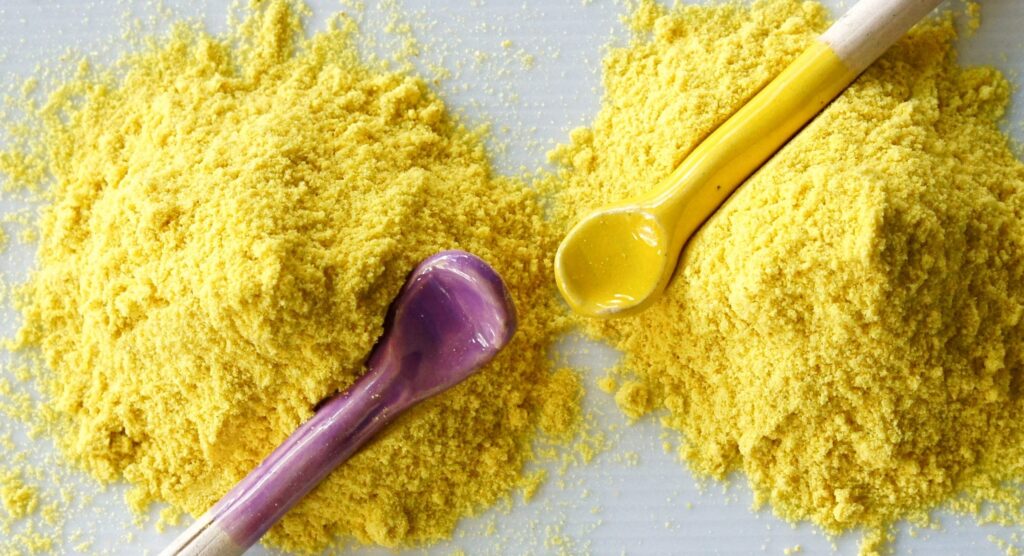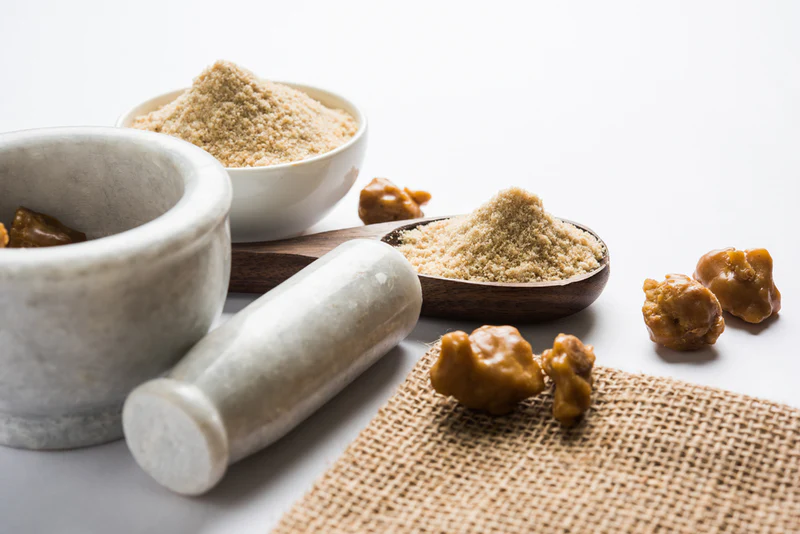What are the primary benefits of using Hing (asafoetida) for skin care?
Summary: Hing offers several skin benefits including anti-inflammatory, antibacterial properties, and reducing blemishes.
Detailed Answer:
- Anti-inflammatory Properties: Hing helps to reduce inflammation and redness on the skin, making it beneficial for soothing irritated skin. Its anti-inflammatory effects are particularly useful for conditions like acne and eczema, where inflammation is a major symptom.
- Antibacterial Effects: Hing’s antibacterial properties help in preventing and treating skin infections. This makes it an effective natural remedy for pimples, acne, and other bacterial skin infections.
- Reduces Blemishes: Regular use of Hing can lighten dark spots and blemishes, giving the skin a more even tone. It works by inhibiting the activity of melanocytes, the cells that produce the skin pigment melanin.
- Improves Skin Texture: Hing helps in smoothing the skin texture by promoting healthy skin cell regeneration. This can result in a more youthful, vibrant complexion.
- Natural Glow: Hing can enhance the natural glow of the skin by detoxifying and rejuvenating skin cells. Its antioxidant properties help combat free radicals, reducing oxidative stress and preventing premature aging.
How can Hing be incorporated into my daily hair care routine?
Summary: Hing can be added to hair masks, oils, and shampoos to strengthen hair, reduce dandruff, and promote scalp health.
Detailed Answer:
- Hair Masks: Mix Hing powder with yogurt and apply it as a hair mask to nourish the scalp and reduce dandruff. The lactic acid in yogurt helps to exfoliate the scalp, while Hing’s antibacterial properties help to eliminate dandruff-causing microbes.
- Hair Oil: Add a pinch of Hing to your regular hair oil, heat it slightly, and massage it onto the scalp to strengthen hair roots and reduce hair fall. The heat helps to open up the pores, allowing the beneficial properties of Hing to penetrate deeper into the scalp.
- Shampoos: You can add Hing to your shampoo for additional antibacterial effects and to promote a clean and healthy scalp. This can help in reducing scalp infections and improving overall scalp health.
- Leave-In Treatment: Create a leave-in treatment by mixing Hing with water or aloe vera gel and apply it to your hair ends to prevent split ends. Aloe vera adds moisture to the hair, while Hing helps to strengthen and protect the hair fibers.
- Hair Rinse: Prepare a hair rinse by boiling Hing in water, let it cool, and use it to rinse your hair post-shampoo to add shine and strength. This can also help in maintaining the pH balance of the scalp, promoting healthier hair growth.

Are there any potential side effects or skin reactions when using Hing topically?
Summary: Potential side effects of using Hing topically include skin irritation and allergic reactions. Always perform a patch test first.
Detailed Answer:
- Skin Irritation: Some people may experience mild irritation or a burning sensation when using Hing on the skin. Always dilute Hing with a carrier oil or another base ingredient. It’s important to start with a small amount and gradually increase it to see how your skin reacts.
- Allergic Reactions: Hing can cause allergic reactions in some individuals. It is essential to perform a patch test on a small skin area before applying it more broadly. If you experience any redness, itching, or swelling, discontinue use immediately and consult a dermatologist.
- Overuse Concerns: Using Hing in excess can potentially lead to dryness or excessive skin peeling. Moderation is key when incorporating Hing into your skincare routine.
- Consultation: If you have sensitive skin or any known skin conditions, consult a dermatologist before using Hing-based products. They can provide personalized advice and help you incorporate Hing safely into your routine.
Can Hing help with specific skin concerns like acne, dark spots, or dryness?
Summary: Hing can help treat acne, lighten dark spots, and alleviate dryness due to its antibacterial, anti-inflammatory, and moisturizing properties.
Detailed Answer:
- Acne Treatment: Hing’s antibacterial properties help in preventing acne-causing bacteria, while its anti-inflammatory effects reduce acne redness and swelling. By maintaining the skin’s natural balance, Hing can also prevent future breakouts.
- Dark Spot Reduction: Regular use of Hing can fade dark spots and hyperpigmentation by promoting even skin tone. It works by reducing melanin production in the affected areas, leading to a lighter and more uniform complexion.
- Dryness Alleviation: Hing acts as a natural moisturizer, helping to hydrate the skin and alleviate dryness. It helps to lock in moisture, keeping the skin soft and supple.
- Improvement in Skin Elasticity: Hing can boost skin elasticity and firmness, contributing to a more youthful appearance. Its antioxidant properties help to fight free radicals, preventing premature aging and promoting skin health.
- Exfoliation: Hing helps in gentle exfoliation, removing dead skin cells and promoting a fresh and glowing complexion. Regular exfoliation with Hing can result in smoother, clearer skin.

Are there DIY recipes for homemade skin and hair care products using Hing?
Summary: Yes, there are several DIY recipes for skin and hair care using Hing, including face masks, hair masks, and toners.
Detailed Answer:
- Face Mask: Mix Hing powder with honey and rose water. Apply the mask on the face for 15-20 minutes to brighten and hydrate the skin. Honey provides moisture and antibacterial properties, while rose water soothes and tones the skin.
- Hair Mask: Combine Hing with coconut oil and yogurt. Apply the mixture to the scalp and hair, leave it on for 30 minutes, then rinse to nourish and strengthen hair. Coconut oil adds shine and hydration, while yogurt helps to cleanse and condition the scalp.
- Toner: Boil Hing in water, let it cool, and use it as a toner to cleanse and tighten the skin pores. This toner can be used daily to refresh the skin and maintain its natural pH balance.
- Spot Treatment: Mix Hing with a few drops of tea tree oil and apply it on acne spots to reduce inflammation and promote healing. Tea tree oil adds additional antibacterial properties, making this a powerful treatment for stubborn pimples.
- Scalp Treatment: Blend Hing with aloe vera gel and massage it into the scalp to soothe and moisturize. Aloe vera provides hydration and relief.
Conclusion
Hing, also known as asafoetida, is a versatile ingredient that offers numerous beauty benefits for both skin and hair. From reducing acne and dark spots to nourishing hair and alleviating dryness, Hing can be a valuable addition to your beauty regimen. However, it’s essential to use it cautiously to avoid potential side effects. With its anti-inflammatory, antibacterial, and moisturizing properties, Hing can help achieve healthier and more radiant skin and hair. Try incorporating Hing into your daily routine with the DIY recipes provided, and enjoy the natural beauty benefits it has to offer.

